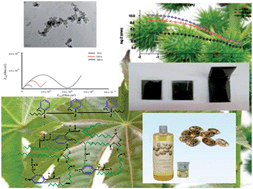Polyorthotoluidine dispersed castor oil polyurethane anticorrosive nanocomposite coatings
Abstract
The present article reports the synthesis and corrosion protection performance of polyorthotoluidine (POT) nanoparticles dispersed castor oil polyurethane (COPU) nanocomposite coatings in acid and saline environments. The structure of POT/COPU was confirmed by FTIR and UV-visible spectroscopic techniques. The nanostructure of the pristine POT nanoparticles and those in the composite was characterized by X-ray diffraction (XRD) and transmission electron microscopy (TEM). The physico-mechanical properties were analyzed using standard methods. The corrosion protective performance was evaluated by weight loss, potentiodynamic polarization and electrochemical impedance spectroscopy in an acid medium. While in the saline environment the corrosion protective performance was investigated in a salt mist chamber using a 5% NaCl solution for 30 days. The morphological behavior of the corroded and un-corroded coated specimen was investigated by SEM studies. The stipulated acid and saline corrosion mechanism was also discussed.


 Please wait while we load your content...
Please wait while we load your content...